FEATURE Diamondback moth
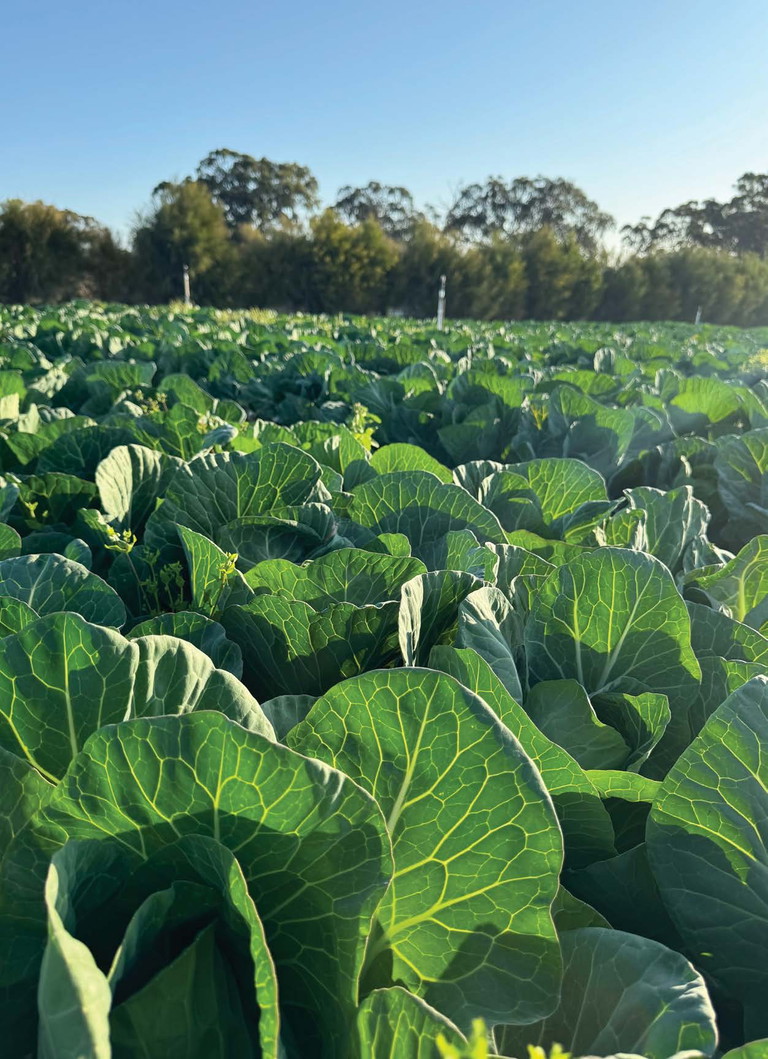
DIAMONDBACK MOTH MANAGEMENT:
The importance of crop monitoring
A case study
The diamondback moth (Plutella xylostella) (DBM) is a major pest of brassica crops, causing significant economic damage worldwide. In Western Australia (WA), it has long been a challenge for Brassica growers due to its rapid life cycle, overlapping generations, and ability to develop insecticide resistance. Effective control requires a combination of Integrated Pest Management (IPM) and Insecticide Resistance Management (IRM) strategies.
Words Chi Nguyen, Regional Development Officer, vegetablesWA and Cezar Moraes, Senior IPM Consultant, Biological Services
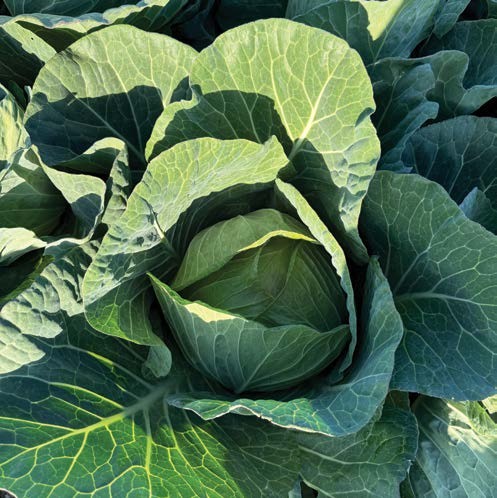
Healthy cabbage on this case study.
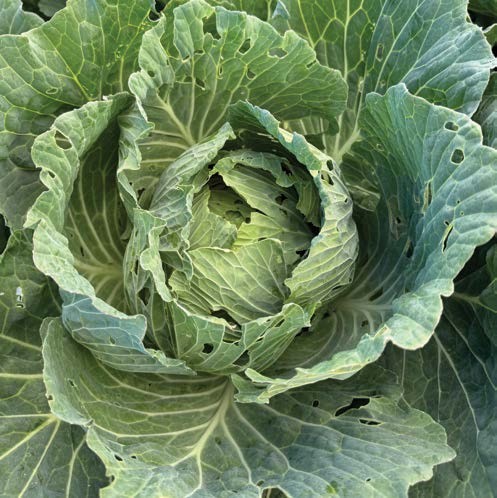
Damage on previous cabbage crop caused by DBM caterpillars.
FROM August to November last year, Chi Nguyen conducted a case study on DBM management in cabbages and broccoli in Gingin. Despite warmer conditions during this period, with average temperatures ranging from 20–30°C, the new crops performed better than those grown during the cooler winter months when DBM activity was lower. His work involved weekly crop monitoring to track DBM larvae and leaf damage, using thresholds to guide spray decisions, and rotating insecticide groups to delay resistance development.
This article highlights key crop monitoring strategies that have shown effective in managing DBM in Gingin, WA. By consistently monitoring pest activity, growers can make timely, informed decisions and apply control measures efficiently.
WA vegetable growers are also strongly encouraged to follow DPIRD’s Two-window strategy and CropLife Australia’s IRM guidelines to help prevent the development of insecticide resistance in DBM populations.
Recognising diamondback moth at different life stages
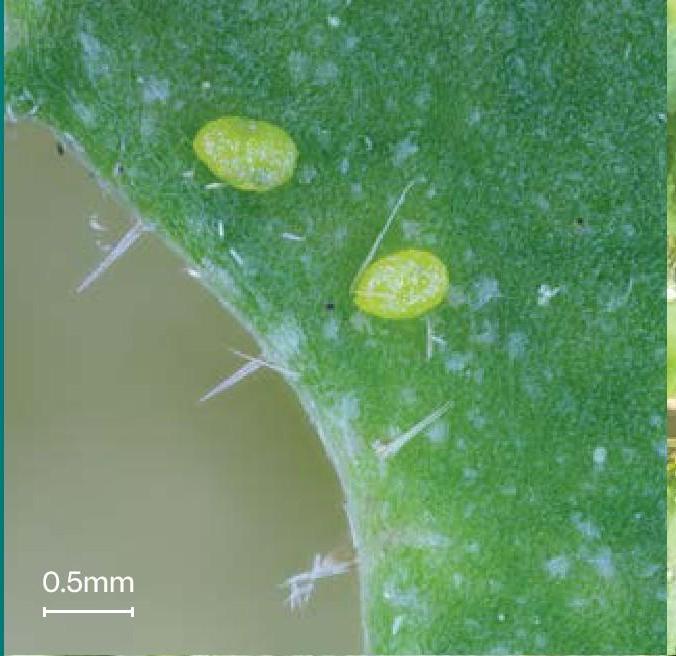
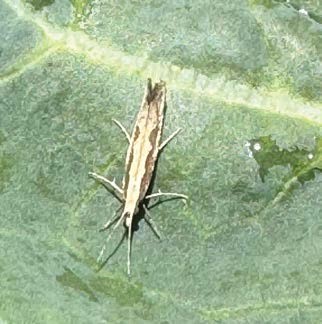
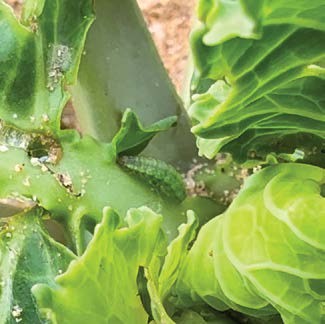
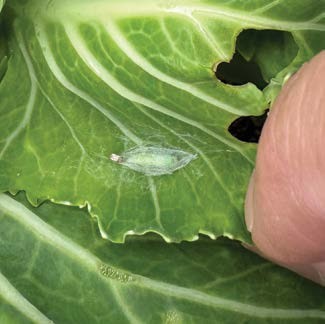
Clockwise from top left: Diamondback moth eggs. Diamondback moth caterpillar. Diamondback moth pupae in a mesh-like cocoon. Adult diamondback moth.
• Eggs: Pale yellow, approximately 0.5 mm long, often difficult to detect.
• Larvae: Pale green, cigar-shaped caterpillars, growing up to 12 mm long. When disturbed, they wriggle violently and may dangle from a fine silk thread.
• Pupae: Initially green, turning dark brown, enclosed in an open-mesh cocoon, often attached to the underside of leaves.
• Adults: Small moths (~10 mm long), grey-brown in colour, with a distinctive white stripe on their back. When at rest, their folded wings form three diamond-shaped markings, giving the species its name.
Best practices for DBM crop monitoring
1. Start early and monitor regularly
– Begin monitoring immediately after planting. – Conduct weekly field checks to assess pest levels.
– Focus on multiple areas within each field, as DBM populations tend to appear along the edges first due to wind dispersal.
– At each area, inspect around 10 plants to determine infestation levels.
2. Target key areas
– Check young, newly emerged leaves in seedlings, as larvae prefer fresh growth.
– For older plants, look for grubbing damage on outer leaves, then inspect the inner leaves, where DBM caterpillars tend to feed.
– DBM caterpillars can burrow into cabbage heads or broccoli florets, making control more difficult as they become protected within plant tissues.
3. Use the right tools
– Use magnifying glasses for early detection of DBM eggs and caterpillars.
– Look for cocoons on the underside of leaves or anywhere on the plant.
– Keep detailed records of pest activity, population densities, and environmental conditions, as warmer weather accelerates DBM development while heavy rains may reduce populations.
4. Spraying decisions based on monitoring
– Apply insecticides only when necessary, based on pest thresholds.
– Target young caterpillars, as they are more susceptible to control measures.
– Ensure proper spray coverage, as DBM larvae often feed on the undersides of leaves, reducing direct contact with insecticides.
– Rotate different insecticide groups to slow resistance development and maintain effectiveness.
Crops check for DBM caterpillars and cocoons.
The role of beneficial insects in DBM control
With limited insecticide options, protecting beneficial species is more important than ever. One key natural enemy of DBM is Diadegma, a parasitic wasp that exclusively targets DBM larvae. To encourage beneficial populations:
• Minimise the use of broad-spectrum insecticides, which can disrupt natural enemies.
• Avoid applying ineffective insecticides, as this can worsen resistance issues while harming beneficial species.
Diadegma releases for biological control of DBM
Two Diadegma releases should occur per planting, 1 to 2 weeks apart, starting at week 2 or 3. Early Diadegma releases are recommended to help maintain populations through winter.
Many growers do not plant all their seedlings at once. Begin releasing Diadegma in young seedlings, then shift release points to new plantings as they emerge (see Figure 1). This means more than 2 releases may be needed for the entire patch or pivot.
Release rates:
• The minimum suggested rate is 250 wasps/ha, divided into 2 release points per hectare.
• Release points should be evenly spaced and positioned at least 20m from the crop edges to reduce wasp loss to adjacent areas.
• Continue releasing Diadegma in older crops when pest pressure is high, and parasitism rates are low.
Release method:
• Diadegma are supplied as pupae on paper cards.
• Cards should be placed into release containers (available from Biological Services) and then distributed in the field.
• Each release container has a wick incorporated into the lid, which must be soaked in a honey solution prior to hanging the containers in the field. This provides newly hatched wasps with an immediate sugar source.
• Aphid parasites can also be released using release containers.
Regular and precise crop monitoring is the foundation of successful DBM management. By integrating with IPM and IRM strategies, growers can detect DBM early, apply control measures effectively, and reduce long-term pest pressure.
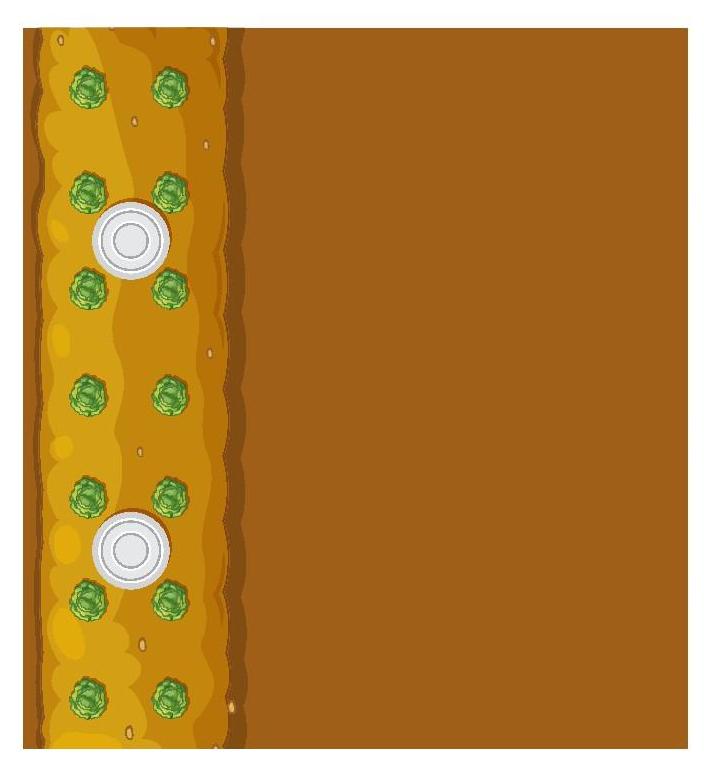
Youngest planting: 2 Diadegma releases
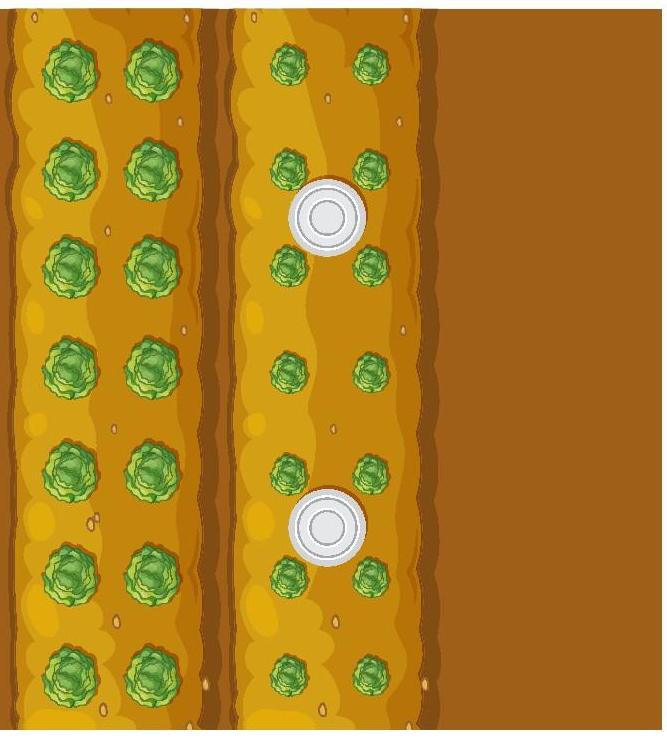
Youngest planting: shift release points over, 2 Diadegma releases here as well
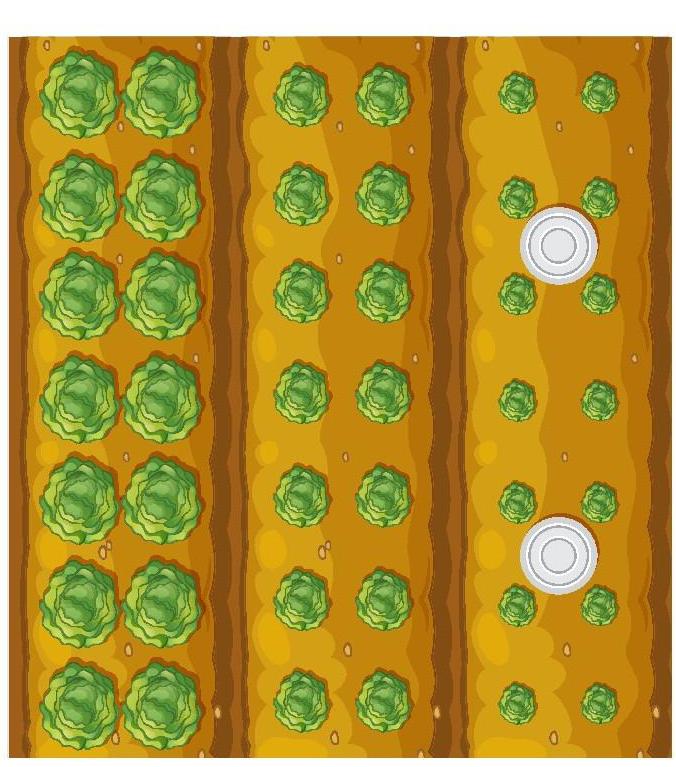
Youngest planting: shift release points over, 2 Diadegma releases here as well
Diadegma release container, 250 pupae per ha (split into two release points)
Young brassica seedling
FIGURE 1: Diadegma releases for Biological Control of DBM
Following regional resistance management guidelines and supporting beneficial insect populations will further enhance DBM control and ensure sustainable crop production.
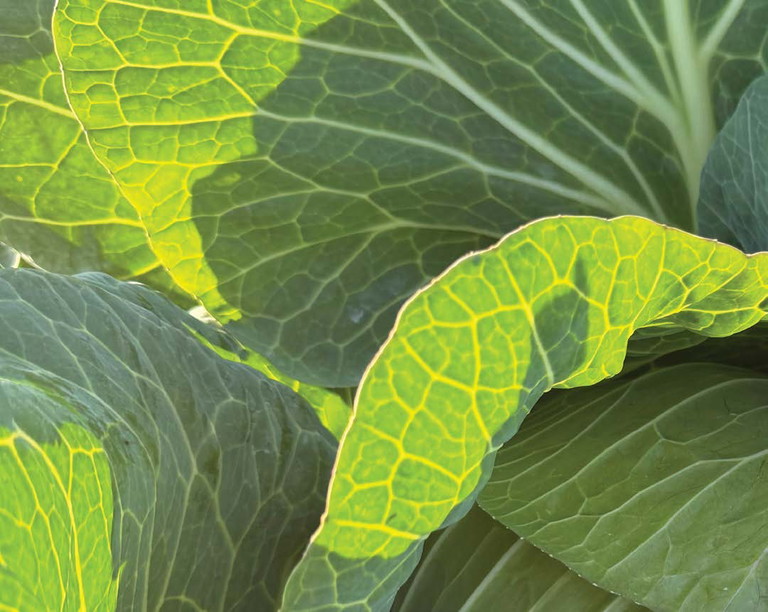
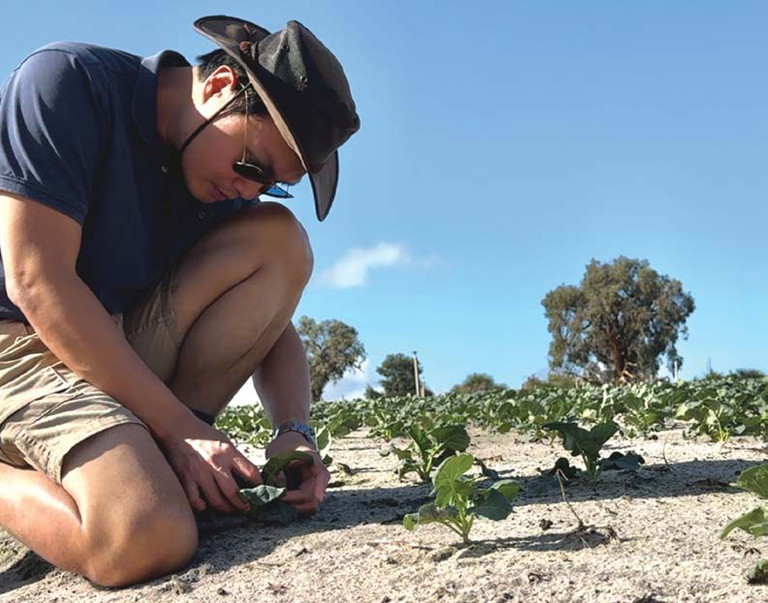
Regular and precise crop monitoring is the foundation of successful DBM management.
We would like to thank Cezar Moraes, Senior IPM Consultant at Biological Services, for his contributions to the Diadegma release program for DBM biological control.
We are looking for growers interested in biological control trials for managing DBM in late autumn and early winter this year. If you’re keen to participate, please reach out!
MORE INFORMATION
For more information, contact Chi Nguyen at 0457 457 559 or email chi.nguyen@vegetableswa.com.au
References
• Diagnosing diamondback moth www.agric.wa.gov.au/mycrop/diagnosing-diamondback-moth
Further readings
• Diamondback moth https://cesaraustralia.com/pestnotes/caterpillars/diamondback-moth/
• Diamondback moth insecticide resistance management in vegetable brassicas
• Brassica, brassica leafy vegetables – Diamondback moth www.croplife.org.au/resources/programs/resistancemanagement/brassica-diamondback-moth